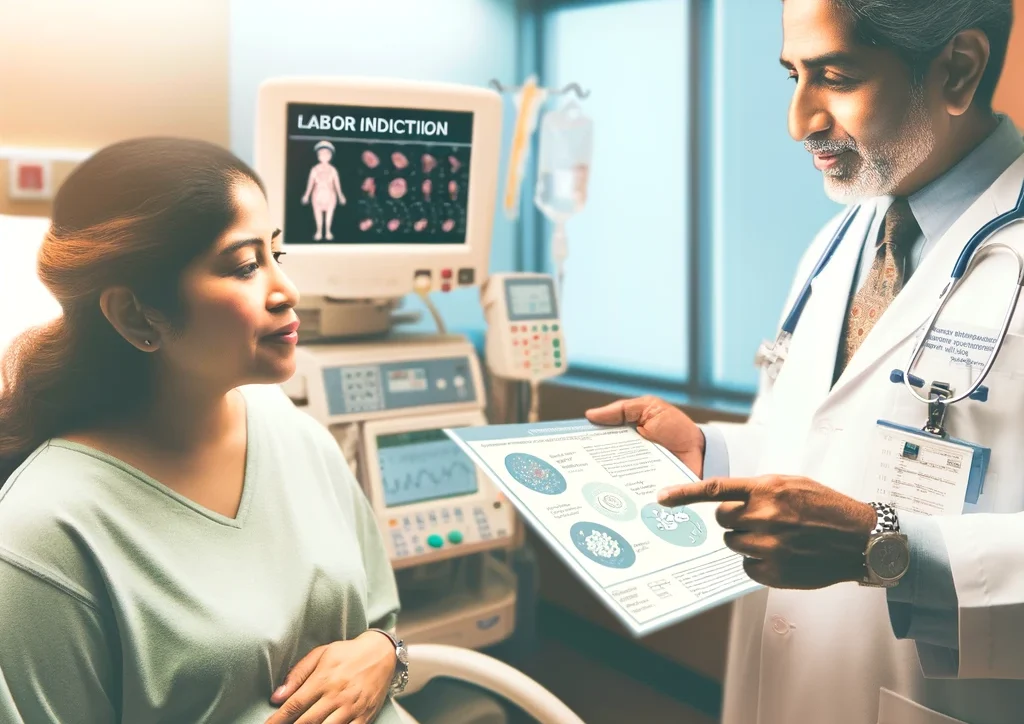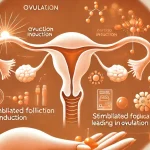One of the questions that often arises as the due date approaches or has already passed is: “Should I be induced?” It is a question that comes with both hope and uncertainty and it is important that you feel well informed about what exactly it entails.
In this article we take you through the history of induction of labor, different methods (both non-medicated, mechanical and medicinal) and why it may sometimes be necessary. We believe that knowledge is power and with the right information you can work with us to make a decision that is best for both you and your child.
Let's dive into these important aspects of childbirth together and prepare you for what may come. Feel free to ask questions; We are ready to walk this beautiful, but sometimes exciting path with you.
A dive into the history of induction of labor
Over the centuries, midwives and physicians have devised a variety of methods for inducing labor, each with their own story. In ancient times For example, different cultures believed in the idea that physical activity or the use of certain things spices could help to induce labor. Looking back, we see that midwifery has developed from these early and often unfounded practices to a more evidence-based approach. But even with this progress, the key question remains: when and how should labor be induced?
With induction of labor over the years we now have three main categories of induction methods: non-medicinal, mechanical and medicinal. Each category has its own history and applications, depending on the specific needs and circumstances of the pregnant woman.
-
- Non-medicinal methods include natural techniques such as nipple stimulation, sex and even certain foods that are anecdotally known for their potential to induce labor.
-
- Mechanical methods use physical aids such as stripping, placing a balloon catheter to manually ripen the cervix or a membrane breaker to puncture the membranes.
-
- Medicinal methods rely on drugs such as prostaglandins to ripen or dilate the cervix and oxytocin to induce contractions.
| Method | Type Introduction | Short description |
|---|---|---|
| Acupuncture / nipple stimulation / flask / sex | Non-medicinal | Accupunture is the use of needles on specific body points to promote labor. Nipple stimulation and pumping can trigger a hormonal response that can trigger labor. An orgasm can also induce contractions. |
| Balloon catheter | Mechanical | A thin tube with a balloon placed in the cervix and inflated to open it. |
| Oxytocin | Medicinal | Medication given through an IV to induce contractions. |
Over the centuries, from natural remedies to highly technological medicine, midwives and doctors have always tried to unravel the secrets of nature to make every birth as safe and healthy as possible. At Midwives Lelystad we understand the value of this historical knowledge and remain at the forefront of using proven methods to make your birth as comfortable as possible, whether you choose a non-medicated, mechanical, or medicinal way to start your labor.
Different ways to induce labor: from natural to mechanical
As the due date approaches, many expectant mothers experience a mix of excitement and impatience, especially if the baby decides to stay put a little longer. There are several methods to induce labor naturally or mechanically, just in case your little one needs some encouragement. Non-medicinal methods for example, stimulating the nipples, which can promote the production of oxytocin, known as the 'cuddle hormone', which can induce contractions. Taking long walks or having sex is also often mentioned, as physical activity and intimate contact can also help start labor naturally.
On the other side are the mechanical methods such as the stripping of the membranes by us as midwives, which can lead to the production of prostaglandins that induce contractions. There is also the option of a balloon catheter, which gently applies pressure to the cervix to promote opening and dilation. The rupture of the membranes can be done artificially with a plastic stick, which sometimes releases hormones that can induce labor. These methods are somewhat more direct and are often used when natural methods have had no effect or when there is a medical need to speed up labor. Below you will find a simple table with the main characteristics of each method:
| Method | Description | Main advantage |
|---|---|---|
| Non-medicinal | Nipple stimulation, sex, walking | Naturally and without medical intervention |
| Mechanical | Stripping of the membranes, balloon catheter, rupture of the membranes | More direct stimulation without medication |
Each method has its own time and place, and it is important to work with your healthcare provider to assess what might work best in your specific situation. At Midwives Lelystad we believe in an approach that respects both the mother and the baby and we will support you in the choice that suits you best.
Medicinal methodshighlighted: what you can expect
When we talk about medicinal methods to induce labor, we mainly talk about the use of medications that help soften the cervix or induce contractions. The great thing about this is that the process is stimulated in a relatively predictable way, so that as an expectant mother you often have a clearer picture of what to expect. Let's take a look at the most common options:
-
- Prostaglandins: These are hormone-like substances that your body produces naturally, but that can also be administered synthetically to make the cervix more flexible and mature, making it easier to open when contractions start. You can receive this as a gel or a tablet, often inserted vaginally.
-
- Oxytocin: When Mother Nature's favorite cocktail to induce labor is not enough, this synthetic hormone is often used. It is administered through an IV and helps to increase the frequency and strength of contractions.
Despite the convenience and effectiveness of these methods, it is important to think carefully and discuss with your midwife or doctor about the need and benefits versus possible risks. As with any medical intervention, there are side effects and risks associated with it. But your care team will only suggest these options if they believe the benefits outweigh the risks. Below is a handy overview of the drug methods:
| Method | Method of administration | Goal |
| Prostaglandins | Vaginal (gel/tablet) | Softening and ripening of the uterine mouth |
| Oxytocin | IV (drip) | Induction and strengthening of contractions |
With these medicinal methods we strive to induce labor in a controlled and effective manner, always with your safety and that of your baby first. Moreover, as your midwives we naturally remain closely involved during the delivery. entire process, to ensure that everything runs as smoothly and comfortably as possible.
When is it time to talk about induction: advice from experts
In the world of welcoming babies, the question often arises: “Is the time to talk about an introduction?” Experts in the field of obstetrics recommend that this is a conversation you should ideally have with your obstetrician or gynecologist around the 39th to 40th week of pregnancy. Of course, every pregnancy is unique and some medical or personal circumstances may preclude it. ensure that this conversation takes place sooner. Important reasons to think about induction include health complications such as pre-eclampsia, diabetes or the baby being larger than average (macrosomia), or the baby's growth retardation in the womb. Induction is not something to decide on lightly, so make sure you discuss all the pros and cons with us as your midwife.
Choosing the right introductory method is just as important as the decision to initiate itself. Each method has its own advantages and disadvantages and should be tailored to your specific situation, so that we as midwives can provide you with advice.
| Methods | Description | Advantages | Cons |
|---|---|---|---|
| Non-medicinal | Nipple stimulation, sex | Natural, minimally invasive | Less control over process |
| Mechanical | Foley catheter, rupture of membranes | More direct than non-medicated | More intervention needed |
| Medicinal | Prostaglandins, oxytocin | Effective, fast | Possible side effects |
It is essential when considering an introduction to be well informed about all options and what they entail. Collaboration and open communication with your healthcare provider can help you make the choice that best suits your needs and those of your baby.
Do's and don'ts: practical tips for when you need to be induced
When preparing for an introduction, you probably have a lot of questions about what to do and what not to do. Below you will find a number of useful tips that can help you prepare for this special moment. Remember, every pregnancy and induction is unique, so always listen to your own body and the advice of your healthcare provider.
-
- Do's:
-
- Ask for detailed information about each introduction method. Knowingthe options can help you make more informed choices.
-
- Make sure you have arranged everything in advance for the ride to the hospital. You really want to avoid stress about transportation on the big day.
-
- Provide a comfortable environment. Take things with you that will make your stay in the hospital more pleasant, such as your own pillow or a blanket.
-
- Do's:
-
- Do not:
-
- Excessive googling about other people's experiences. Too much information can cause unnecessary anxiety. Every process is unique.
-
- Undertake strenuous physical activities just before the induction. It is important to save energy for the actual birth.
-
- Not getting enough sleep the night before the induction. Although it may be difficult because of the nerves, try to get enough rest.
-
- Do not:
Here's a simple overview to put the do's and don'ts together:
| Do it | Do not |
|---|---|
| Gather information about introductory methods | Excessive googling about other people's experiences |
| Arrange transportation in advance | Engage in strenuous physical activities |
| Ensure comfort | The night before the introduction not enough sleep |
By keeping these tips in mind, you can prepare yourself for the introduction in the best possible way. Remember that your care team is there to support you. Don't hesitate to ask questions or share your concerns. Together we ensure the most positive experience possible. Good luck!
Conclusion
We hope this article has given you valuable insights into the different methods of inducing. Whether you are on the eve of an introduction or simply want to know more about the subject; knowledge is power, especially when it comes to the health of you and your baby.
At Midwives Lelystad we understand that every pregnancy is unique and that the choice of whether or not to induce is a personal one. We are ready to guide and support you in making the right decision for your situation. Remember that your body was made for this wonderful process and that you are not alone. Together we look at the best approach for a Pure Beginning.
After reading this article, do you still have questions or would you like personal advice? Please feel free to contact us. We are here to help you with a cordial approach and a professional ear.
Let nature do its work and know that we are there to support you, whether it is natural, mechanical or medicinal. For every beginning, for every birth, for you.








